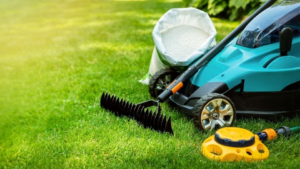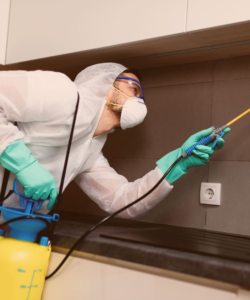If your handyperson business works on residential or commercial properties, you can improve your brand recognition by contacting local businesses. Propose mutually beneficial partnerships, such as cross-promoting each other’s services or offering discounts for referred clients.
If a project requires specialized trades like plumbing or electrical work, ensure the handyperson has the proper license. Check their work profile and ratings on a handyman app. Click the Handyman Chandler to learn more.

Handypersons are skilled in performing a range of repairs and maintenance tasks that electricians, plumbers and similar professionals don’t generally offer. This makes them the ideal choice for homeowners and business owners looking to tackle general maintenance jobs that require a high level of expertise.
Some common repair services that handymen provide include –
Door and window fixes
Doors and windows are an essential feature of a home’s security and aesthetics, which is why Handymen make this a top priority when it comes to repairs. They’re well versed in installing new doorknobs and handles, repairing or replacing damaged doors, as well as upgrading existing locks to boost security. They can also handle a variety of other window upgrades, such as repairing or installing blinds and curtains, ensuring they’re perfectly fitted to the frame.
Gutter cleaning
Handymen take a proactive approach to protecting homes from water damage by meticulously clearing gutters and downspouts. This includes removing debris, fixing clogs and making repairs, preventing future issues and ensuring rainwater flows away from the property effectively.
Carpentry
Handyman are skilled in a variety of carpentry projects, including mounting shelves that optimize storage space and constructing custom cabinets to align with design preferences and practical requirements. They’re also adept at repairing or fitting trim and molding, boosting the visual appeal of rooms.
Painting and staining
Handymen often apply interior and exterior paint and stain, allowing them to refresh and revitalize the look of a room with little effort. They can even refinish wooden surfaces, such as wood furniture or baseboards.
Assembling furniture
Handymen can also assemble a wide array of furniture for their clients, from tables and chairs to beds and desks. This is a popular service for customers who have purchased some-assembly-required furniture but don’t want to deal with the hassle of putting it together themselves.
Renovations
Handymen are proficient in a wide range of tasks, including minor renovations that boost a property’s overall appeal and utility. From repairing leaky faucets to installing light fixtures and ceiling fans, they handle a variety of plumbing and electrical services with ease. Additionally, they are capable of painting walls and ceilings, re-hanging doors and replacing cabinet hinges. These small repairs and renovations go a long way in ensuring that residential or commercial spaces function properly, improving the quality of life for residents or employees and increasing a property’s value for future sales prospects.
Professional handymen maintain a high standard of work that is consistent and reliable. They understand the importance of clear communication, and strive to provide the best possible service for their clients. This ensures that all maintenance and repair requests are completed in a timely fashion, minimizing any impact on the client’s day-to-day operations.
Depending on the nature of their job, handymen may be required to work outdoors – for example, clearing blocked gutters or working on a roof – as well as indoors. In these instances, a handyman will be equipped with the appropriate safety gear to avoid any potential accidents or injuries. Additionally, they will also be familiar with the latest methods and technologies used in home repair, allowing them to perform these duties effectively and efficiently.
Because handymen are cross-trained to handle a range of jobs, they eliminate the need for businesses to hire multiple contractors for specific maintenance needs. This saves time and money, while maintaining a consistent level of service. In addition, handymen are able to respond quickly to repairs and maintenance requests, reducing the amount of time a space is out of commission and consequently boosting productivity.
If you’re looking to upgrade your office space, consider hiring a handyman to help with renovations. They are able to make a range of improvements, from moving furniture to hanging new artwork. In addition, they can repair and install light fixtures, paint surfaces and even refinish wood flooring. They can also update electrical outlets and switches, improve lighting and air flow, and fix any other issues that might be affecting your workplace’s functionality or safety.
Installations
A handyman can perform a wide range of installations in homes and offices. Many of these installations are small, but they can help homeowners improve their quality of life and make their home or office more functional. For example, installing an over-the-stove microwave or a Ring doorbell is a quick task that can earn handymen good will with clients and encourage them to book their services for future needs.
Drywall installation is a common service requested by homeowners. Handymen can repair or install drywall in walls, ceilings, and other surfaces, making them look new again and improving their structural integrity. They can also patch holes and cracks in walls, ensuring a smooth surface primed for painting or wall coverings.
Other common installation projects that handymen can perform include bathroom venting fans, ceiling fan installations, and dimmer switches. These fixtures can add a touch of elegance to a room and improve air circulation in large spaces. In addition, installing light fixtures can make rooms more functional and appealing. Handymen can also mount chandeliers, pendant lights, and sconces in homes.
Another important service handymen can offer is smart home upgrades. They can install a variety of devices that allow homeowners to control their lighting, temperature, and other systems from a smartphone or computer. These innovations can make a home more energy efficient and increase its security.
Some home improvements, such as plumbing and electrical work, require a licensed plumber or electrician to complete the job safely. However, handymen can often assist with these tasks by repairing or replacing parts or components and following proper safety procedures.
Woodwork is a popular request from homeowners, and handymen can provide many carpentry services, including building custom shelves and repairing wooden furniture. They can also build and install fences and decks, as well as repair siding and replace windows and doors. They can also clean out gutters, removing leaves and other debris from their drains and downspouts to prevent clogs. Gutter cleaning is an especially important service for homeowners with children or elderly parents, as it can prevent accidents from falling off the side of a ladder or from being injured by loose or falling objects.
Cleaning
Handymen often perform a variety of cleaning tasks, including pressure washing exteriors and driveways to remove dirt, grime and stains. They may also clean gutters, windows, screens and other components of a home to prevent damage or improve its appearance. Similarly, they might paint and stain fences, decks and other outdoor structures. A handyman could also install a new shower door or replace old cabinet hardware.
These examples are selected automatically from various online sources to illustrate the usage of the word ‘handyman.’ Click here to see more examples from the Cambridge Dictionary. 2016 Cambridge University Press.
These example sentences are automatically generated from corpora and other sources. They do not represent the opinion of the Cambridge Dictionary editors or its licensors.







